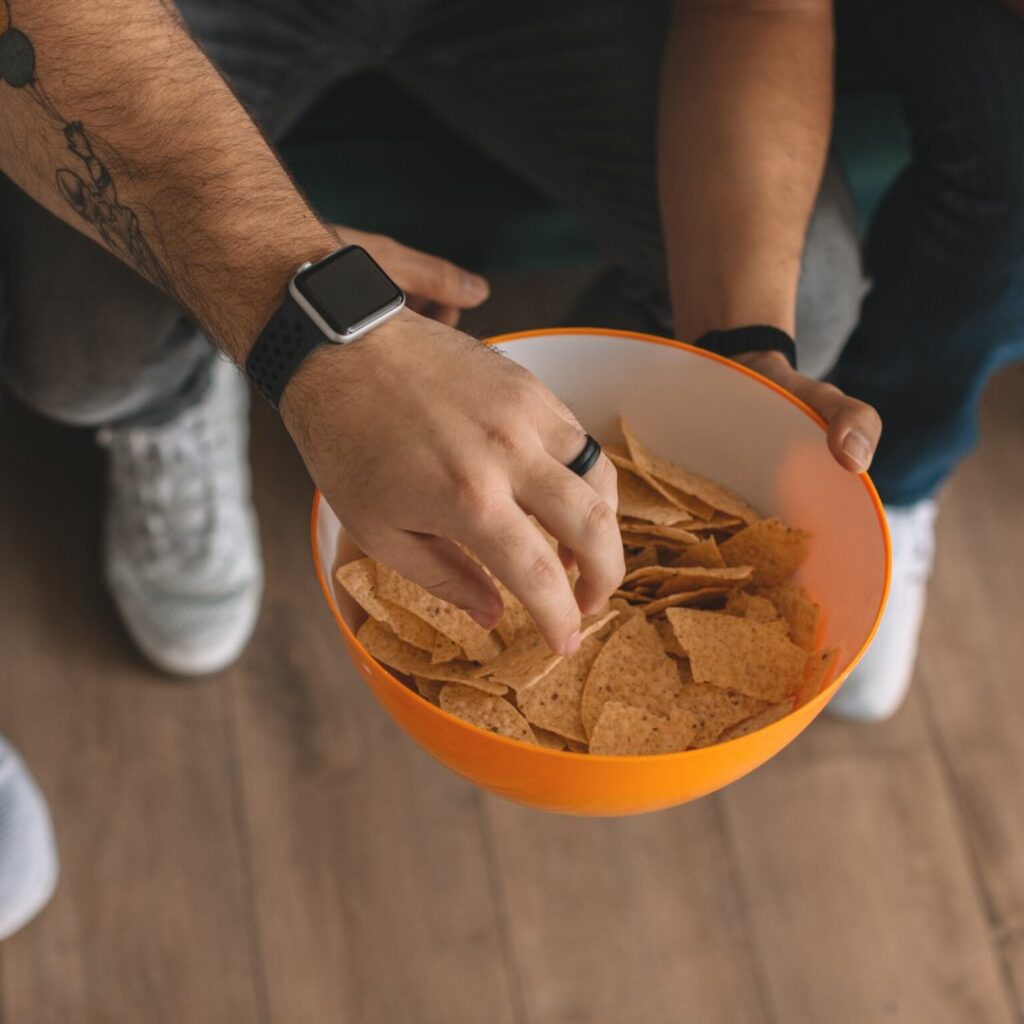By: OSU Dietetic Interns Roopkiran Kaur and Courtney Mercier, and OSU Dietetic Internship Director Jenny Jackson, PhD, MS, RDN, CHWC

Have you ever tried to follow a rigid diet plan? Do you often think about dieting, or food in general? Do you ever feel guilty when indulging in your favorite treats?
If you answered “yes” to any of these questions, intuitive eating may be just what you need to feel freedom around food.
What is intuitive eating?
The phrase intuitive eating was first coined in 1995 by Evelyn Tribole and Elyse Resch in their book, “Intuitive Eating: A Revolutionary Diet Program That Works.”1
In short, it is the act of listening to your body when deciding when and what to eat.
In contrast to traditional diet approaches, which involve changing —and often restricting — what you eat, intuitive eating offers an opportunity to shift how you eat. It challenges the idea that foods are either “good” or “bad.”
Rather than placing an unhealthy emphasis on weight loss, intuitive eating focuses on creating a healthy relationship with food by listening to your body’s natural hunger cues.1
Why you should try it
Diet culture is pervasive in the US. We are constantly bombarded by messages to eat this way or that way — messages that tell us we don’t know how to eat “right.”
Traditional diets are not only restrictive; they require a lot of mental energy, which is difficult to maintain for long periods of time.
It’s no wonder why popular diets fail so many of their followers — these diets are unrealistic and unsustainable.

Ignoring hunger cues, eliminating your favorite foods, or feeling like a failure if you eat the “wrong” foods is incredibly challenging and is bound to lead to burn out and crushed self-esteem.
Intuitive eating challenges this mindset by promoting the idea that food is morally neutral.
With intuitive eating, you rely on listening to what your body wants to eat, rather than following rigid diet rules.1
Intuitive eating also emphasizes mindful eating rather than emotional eating.

Emotional eating may look like grabbing a bag of chips after a hard day, eating them without considering if you actually want them, and then getting to the bottom of the bag and still feeling unfulfilled.
Alternatively, mindful eating is acknowledging that the chips may bring you some joy, choosing to eat and savor them, and stopping when you are full.
Either way, you eat the chips.
With mindful eating, the chips are an intentional, mindful choice. In this way, intuitive eating helps you to fully enjoy what you eat without the guilt.
Principles of intuitive eating
Intuitive eating is guided by ten principles2, summarized as follows:
1. Reject the diet mentality
Reject trendy diets and let go of ideas that promise easy weight loss. Break the cycle of constantly being on a diet and feeling like a failure when the diet doesn’t go as expected.
Free yourself of the mental load that comes with food restriction.
2. Honor your hunger
Hunger is your body telling you that you need food — listen to your body!
Allowing yourself to eat when you are hungry is the first step in rebuilding a healthy relationship with food.
3. Make peace with food
Make food your friend, not your enemy. If you restrict yourself from eating certain foods, the desire for those foods will intensify until you give in and then feel guilty about it.
If you want a certain food, give yourself permission to eat it and enjoy it.
4. Challenge the food police
The food police live in your head and all around you. The food police tell you that you are “good” for eating the “right” foods and “bad” for eating the “wrong” foods.
Challenge this nonsense by turning away from these thoughts and accepting that food is morally neutral.
5. Discover the satisfaction factor
Find pleasure in the experience of eating food. Eat the foods you want in an enjoyable environment and find yourself satisfied.
6. Feel your fullness
Listen to your body. Feel the signals that tell you that you are full. Eat slowly, taste your food, and pause when needed to ask yourself if you are full.
Stop eating when you are full. If your plate is not empty, store food for later.
7. Cope with your emotions with kindness
Explore a variety of options for coping with your feelings. Strong emotions may trigger us to use food for comfort, but food can’t fix the root of the problem.
Be kind to yourself as you work to address the source of your emotions.
8. Respect your body
All bodies are different and all bodies deserve respect.
It would be unreasonable to expect a shorter person to work on being taller, and the same goes for body size.
Accepting all body shapes and sizes allows us to feel better about who we are and to reject the diet culture that thrives off of body shame.
9. Movement — Feel the difference
Exercise doesn’t need to require a rigorous workout routine.
Simply move your body in a way that feels good and brings you joy rather than worrying about how many calories you are burning.
10. Honor your health — Gentle nutrition
There is no right way when it comes to eating or health.
Choose foods that fuel your body and help you to feel good.
Make time for eating.
What you eat for one snack, one meal, or even what you eat for a couple of days does not define whether your diet is healthy or not.
Eating healthy foods on a regular basis is what matters most.
Be gentle with yourself and your progress toward a healthier self.
Does intuitive eating work?
Studies have shown that practicing intuitive eating offers a lot of benefits.
People who eat intuitively are more likely to have higher confidence levels, healthier body image and an overall better relationship with food.
Eating intuitively may also decrease the likelihood of disordered eating patterns and negative body image.3,4
How to get started
Without judgment, reflect on your eating habits. Some questions to ask yourself:
- Are you intentional about making time to eat so that your body has enough fuel to help you feel good and thrive every day?
- Do you power through feeling hungry instead of honoring your hunger by eating?
- Do you already eat intuitively, or are your food choices based on internal and external pressures?
Learning to listen to your body can feel strange at first. Body cues are more than just your stomach growling.
Hunger cues can be grouchiness, feeling fatigued, a mild headache or thoughts about food. These are all indicators that your body is trying to tell you that it needs food.
While you learn to listen more closely to your body, try using all your senses when eating.

When you take a bite to eat, try smelling the food first, take the first bite with your eyes closed and feel the texture in your mouth. Notice how your body feels while you eat.
This will help to build your mindful eating skills, promote a healthy relationship with food, and perhaps even give you more insight into the foods that you enjoy.
Learn more about intuitive eating in the 25th-anniversary edition of the foundational book “Intuitive Eating” by registered dietitians Evelyn Tribole and Elyse Resch.
Small steps toward a more joyful you
By practicing the principles of intuitive eating, you are on your way to building a happier and healthier relationship with food, and with yourself. Remember, change can be hard and takes time.
Empower yourself to reject diet culture and try something new.
Learn how to study nutrition at Oregon State University.
Sources:
- Tribole E, Resch E. Intuitive Eating: A Revolutionary Program That Works. St. Martin’s Griffin; Third edition. 2012.
- Tribole E, Resch E. 10 principles of intuitive eating. Intuitive Eating. 2019.
- Dyke NV, Drinkwater EJ. Review article relationships between intuitive eating and health indicators: Literature review: Public Health Nutrition. 2013.
- Conason A. The evidence for intuitive eating. Psychology Today. 2017.
This post originally appeared on the Moore Family Center Food Coach blog.